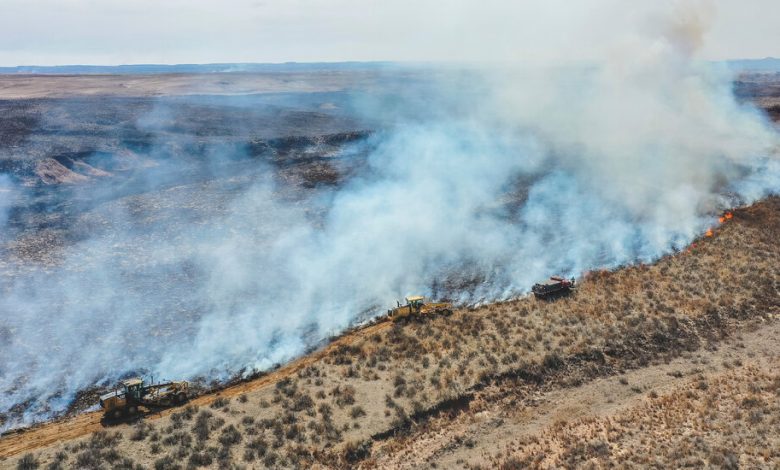The Fires Sweeping Across Texas Offer a Terrifying Warning

On Thursday, as flames from the Smokehouse Creek Fire raced eastward across the Texas Panhandle for the fourth straight day at speeds faster than a person can run, a cold front, driving a snow squall, swept southward over the Great Plains. In an elemental collision, the fire and snow met east of Amarillo, the swirling flakes joining, and then melting, into the smoke and ash of the colossal prairie fire.
The snowstorm has passed, but the fire — one among several major blazes active in Texas — keeps burning. As of Friday, the Smokehouse Creek Fire had affected more than a million acres, making it the largest wildfire in Texas history, and one of the biggest in the history of the country. Still only 15 percent contained, it has crossed into Oklahoma, leaving in its wake herds of dead cattle and dozens of burned homes. At least two people have died. The forecast is for what people in the firefighting business call “fire weather” — hot, dry and windy. Under these conditions, the dozen fires in the region could, theoretically, keep burning indefinitely.
Texans know that fires aren’t uncommon in the Panhandle this time of year, and neither is snow. But huge, lethal fires like Smokehouse Creek represent something different. Winter fires on this scale signal a much larger disruption to climate stability that will distort not only our concept of seasons, but everything we do and care about.
Two weeks before the Smokehouse Fire broke out, I flew to Seattle from Cincinnati over a landscape I know well. But some 30,000 feet below my window seat lay a country I barely recognized: From the Ohio River to the Rockies, there was virtually no snow; the lakes and rivers were ice free. I’m a northerner, and I know what February is supposed to look like, but what season was this?
For weeks now, red flag warnings from the National Weather Service indicating elevated wildfire risk have been popping up all across the United States — from the Mexican border to the Great Lakes and the Florida panhandle. Similar warnings are appearing north of the Canadian border. On Feb. 20, the province of Alberta, the Texas-size petro-state above Montana, declared the official start to fire season. This was nearly two weeks earlier than last year, and six weeks earlier than a couple of decades ago. Alberta is in the heart of Canada, a famously cold and snowy place, and yet some 50 wildfires are burning across that province. In neighboring British Columbia, where I live, there are nearly 100 active fires, a number of which carried over from last year’s legendary fire season (the worst in Canadian history) linked to low snowpack and above average winter temperatures.
It is alarming to see these fires and warnings in what is supposed to be the dead of winter, but fire, as distracting and dangerous as it is, is merely one symptom. What is happening in North America is not a regional aberration; it’s part of a global departure — what climate scientists call a phase shift. The past year has seen virtually every metric of planetary distress lurch into uncharted territory: sea surface temperature, air temperature, polar ice loss, fire intensity — you name it, it is off the charts. It was 72 degrees Fahrenheit in Wisconsin on Tuesday, and 110 degrees Fahrenheit in Paraguay; large portions of the North Pacific and the South Atlantic are running more than five degrees Fahrenheit above normal.





